Find yourself at Six Senses Kyoto, the brand's breathtaking Japan debut
Six Senses Kyoto opens its doors boasting tranquil, luxurious interiors by Blink Design Group
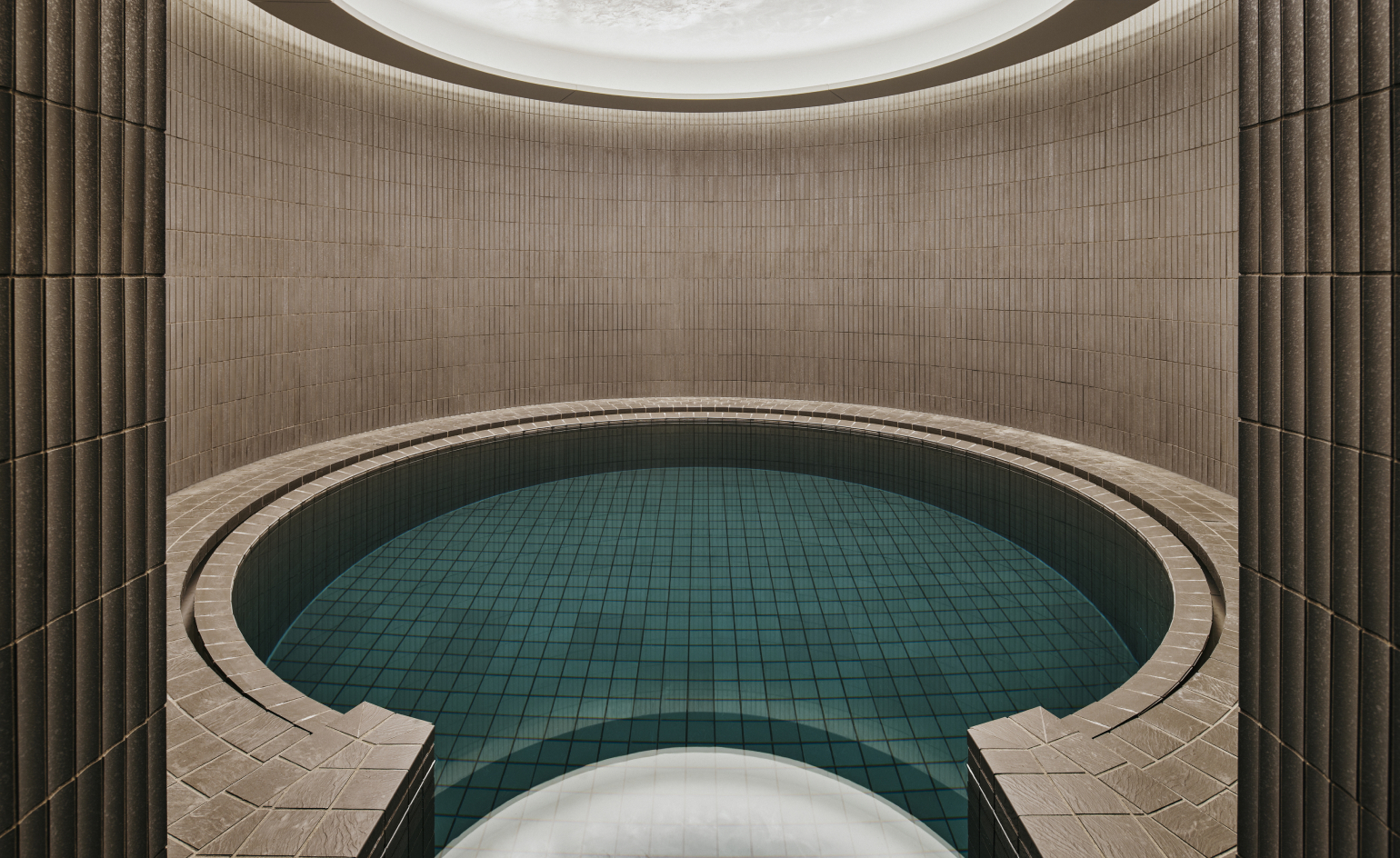
The new Six Senses Kyoto, a Japan debut for the hotel brand, fuses a medley of inspirations to create a serenely escapist modern wellness retreat in the Higashiyama district of the ancient city. Playful, organic, biophilic and sustainable were the key themes when developing the airy new-build property, which is home to 81 rooms and suites that boast mindfully layered interiors by Singapore’s Blink Design Group.
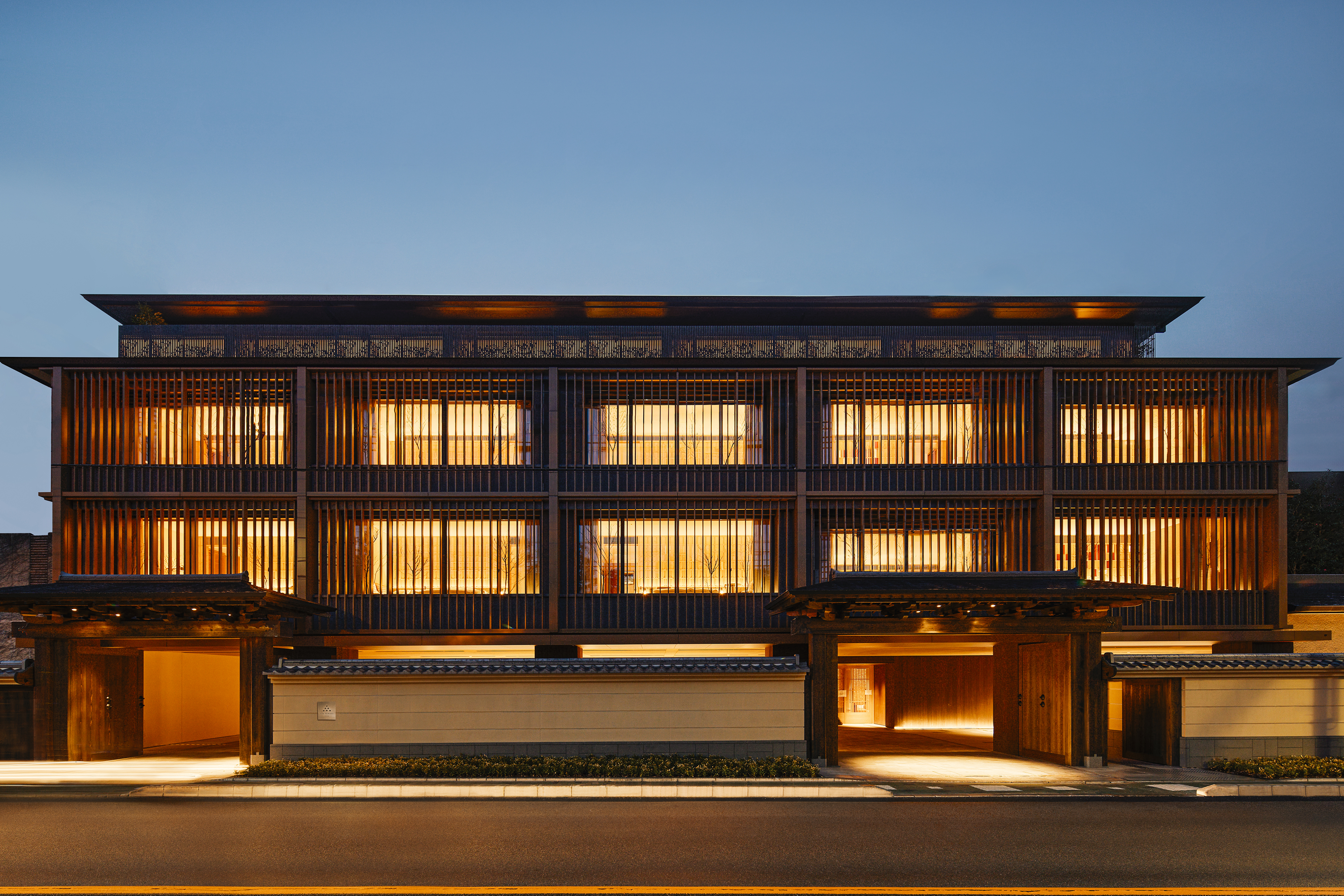
Six Senses Kyoto Exterior
Kyoto, of course, is the protagonist: from the contemporary crafts and playful references to its ancient heritage and through to wellness, which taps into the wisdom of the city’s ancient cultural rituals. The design offers a modern riff on the Heian era of Kyoto, a richly fertile creative period from the late 8th century to the early 12th century when countless traditional arts flourished in the former capital city.
Retreat to Six Senses Kyoto, a serene hotel in the ancient city’s Higashiyama Ward

Six Senses Kyoto Entrance Porch
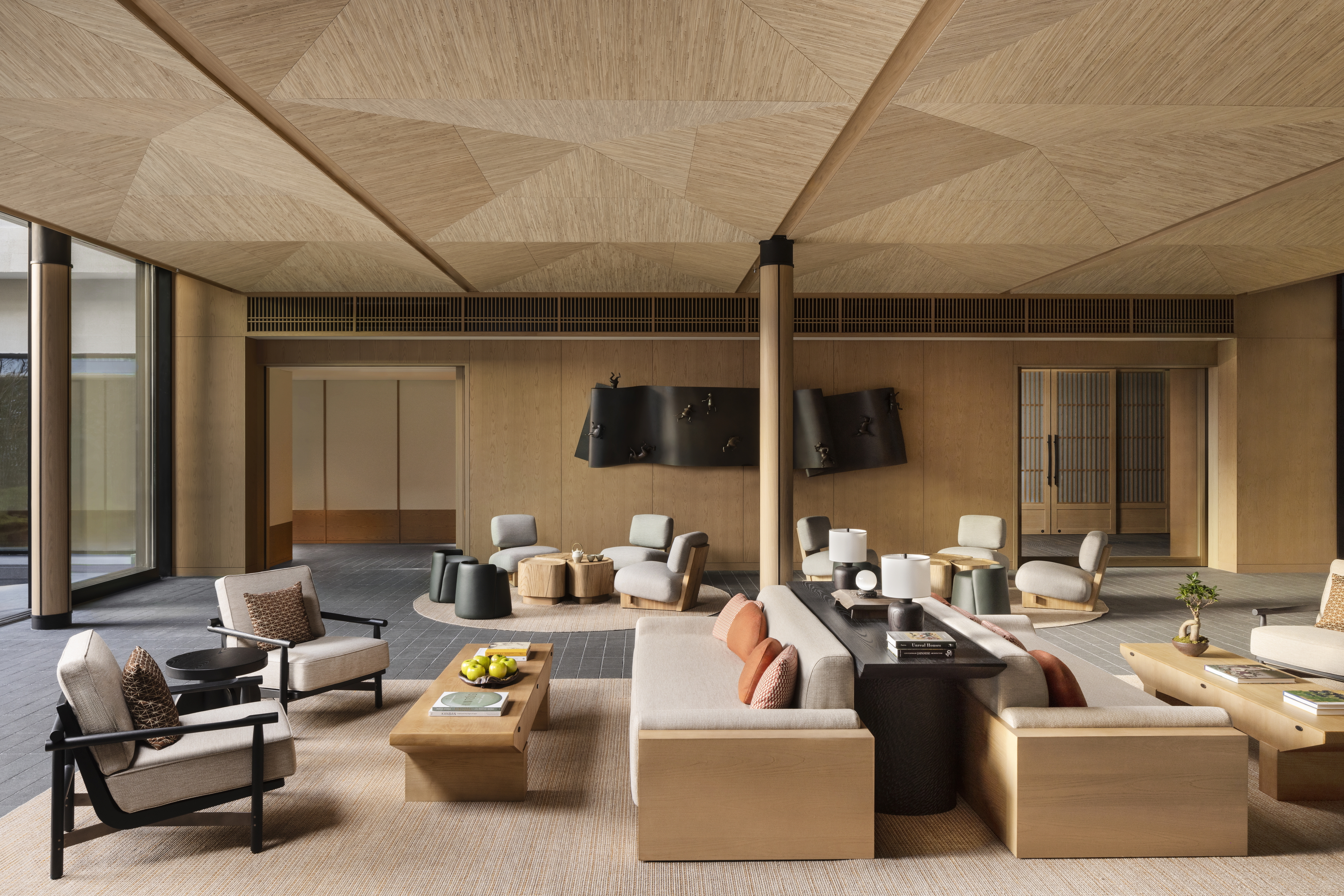
Six Senses Kyoto Lobby
Clint Nagata, the founder and creative partner at Blink Design Group, tells Wallpaper*: ‘We were tasked with conceptualising the ultimate oasis in downtown Kyoto, honouring the courtly elegance and refined charm that marked the city’s birth as a new capital, reimagined through the lens of contemporary style.’
He continues, ‘Taking a deep dive into the heyday of the Heian era, which celebrates the concept of miyabi (a heightened refinement and appreciation of nature which flows through the design), we sought to align with our concept of ‘place-making’, something very near and dear to our hearts. It means showcasing the culture of a location in its instinctive way that connects the hotel magically with its environs.’
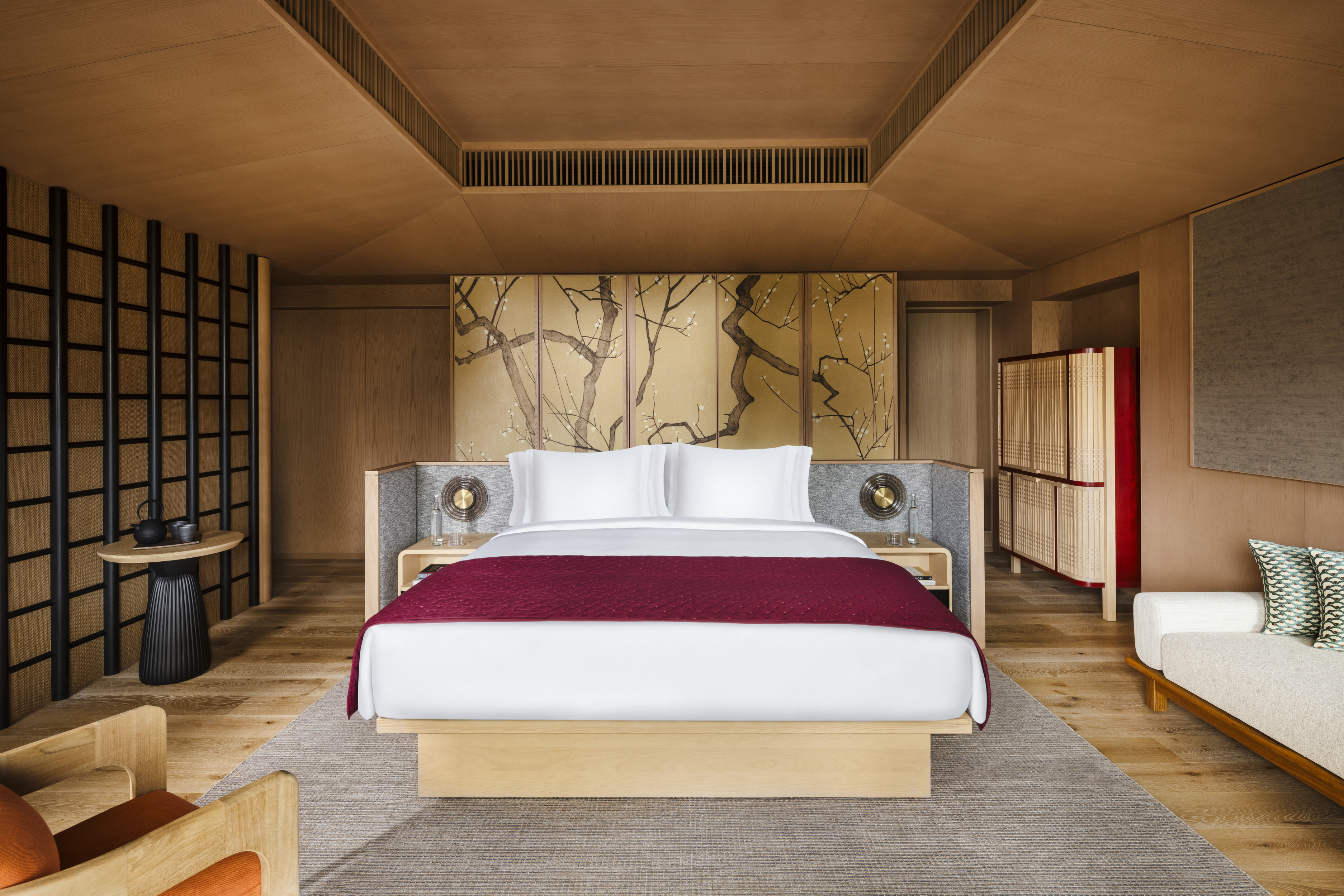
Six Senses Kyoto Three Bedroom Penthouse Suite Master Bedroom

Six Senses Kyoto Three Bedroom Penthouse Dining Room
Upon crossing the hotel’s temple-like wooden threshold, the mood shifts– with panels of intricately woven hikihaku foil reflecting shades of the sun, crafted by century-old Kyoto artisans Nishimura Shoten, alongside the naturally-hewn edges of a horse chestnut table. Natural light floods the main lobby space overlooking a large courtyard garden. Meanwhile, a long white ash front desk sees a scene-stealing wall depicting 504 raku tiles, crafted over two years by ceramic artisan Yoshimura Rakunyu.
The work captures an abstract shift of oranges and greens, evoking nearby Mount Kurama, the birthplace of reiki and one of the settings in Tale of Genji – set in Heian-era Kyoto and thought to be the world’s earliest novel. High ceilings reflect organic undulations hinting at early folded books known as orihon, and a metal wall sculpture depicts a cast of animals emerging from a scroll in reference to Japan’s first manga comic, a playful 12th-century work known as Choju-giga.
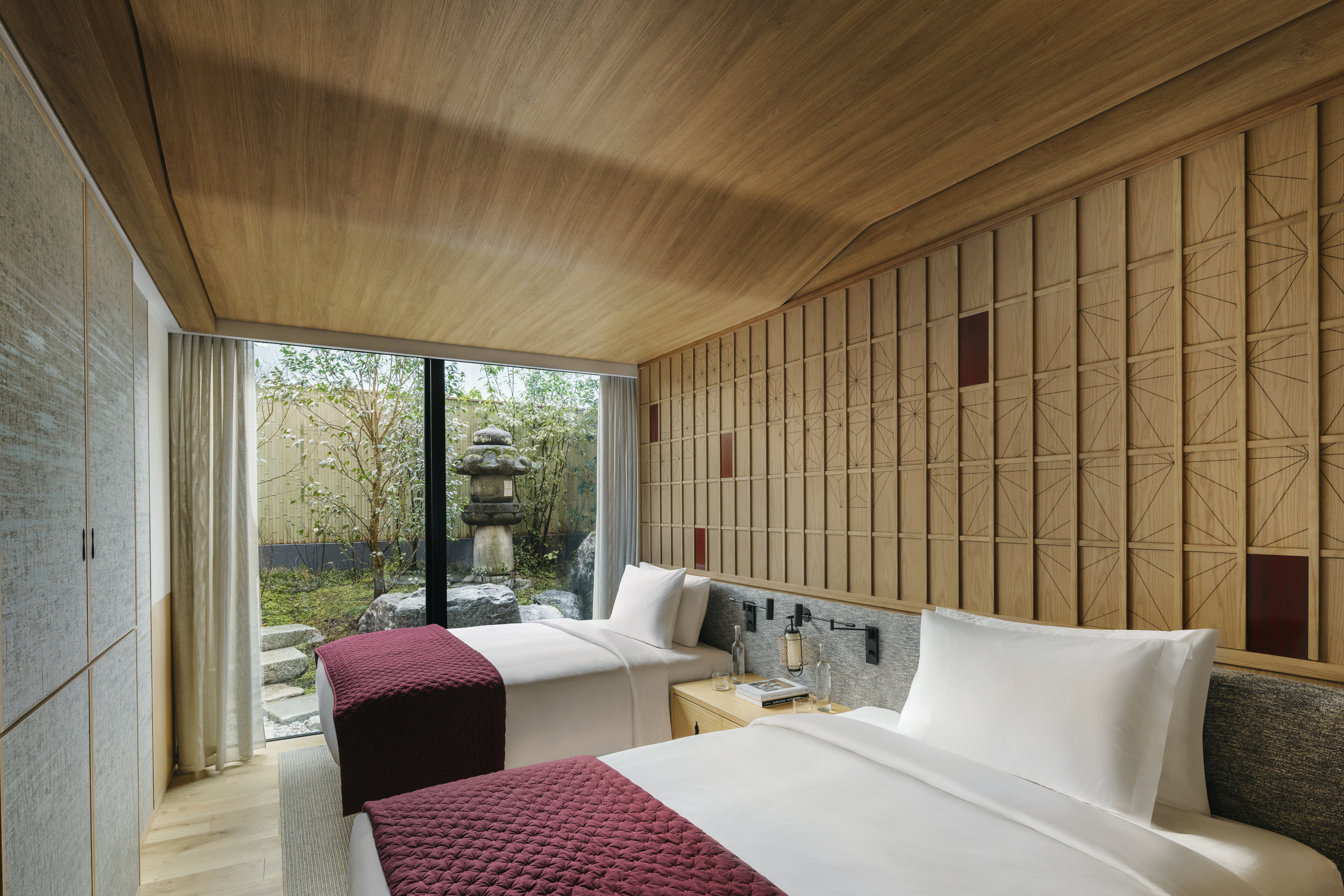
Six Senses Kyoto Premier Suite Garden Twin Bedroom
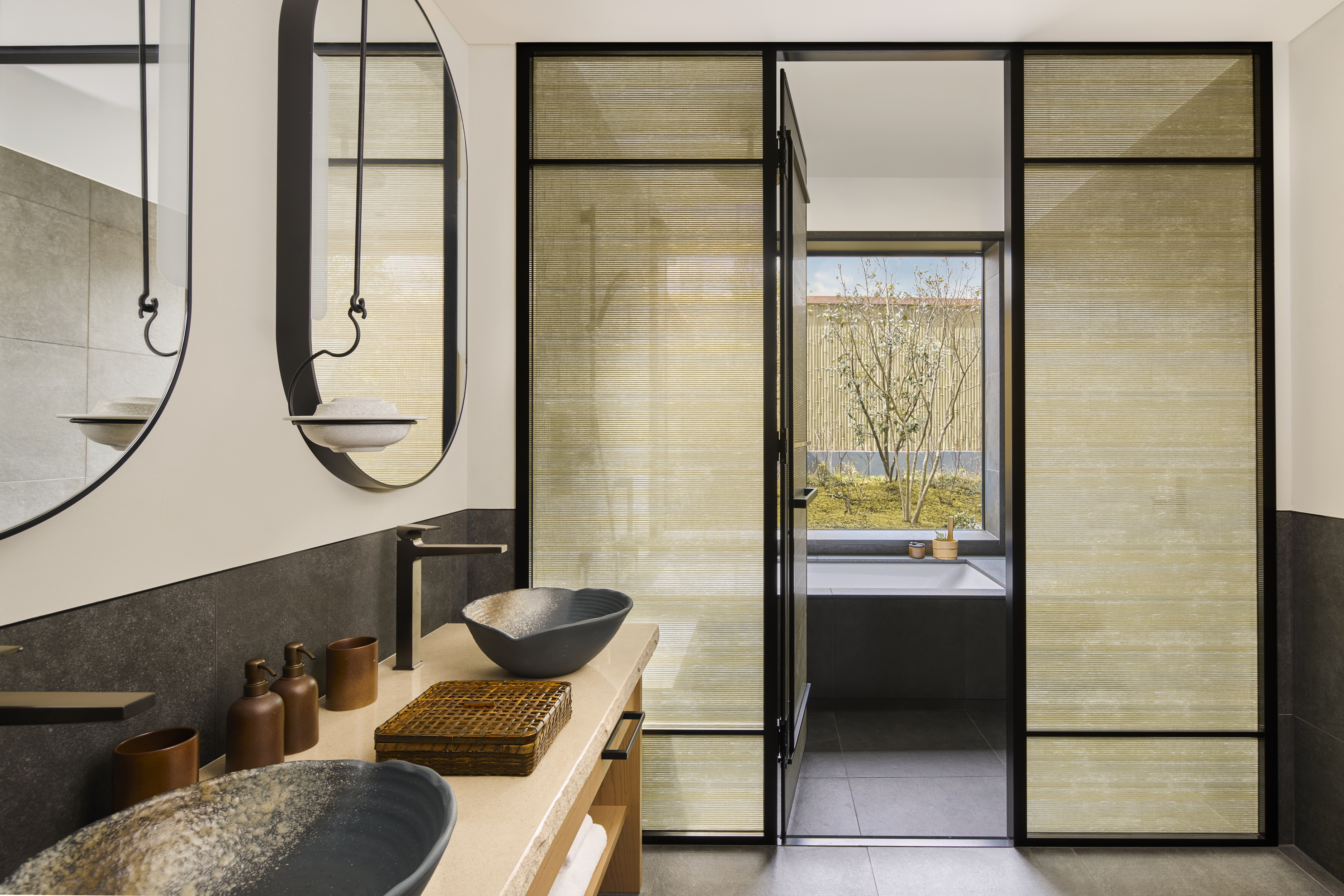
Six Senses Kyoto Premier Suite Garden Twin Bathroom

Six Senses Kyoto Premier Suite Garden Twin Private Garden
The playful tone continues in the elevator, where organically shaped mirrors showcase animal etchings. Lining the upper corridors is a fox head crafted from recycled washi paper. Guests can illuminate the fox’s whiskers or eyes at the flick of a button to reflect their occupancy. Meanwhile, the hotel’s signature scent lingers in the air – a warm medley of Japanese woods with a touch of citrus crafted by Tomoko Saito Aromatique Studio.
Wallpaper* Newsletter
Receive our daily digest of inspiration, escapism and design stories from around the world direct to your inbox.
The guest rooms, overlooking either the central courtyard or Toyokuni Shrine at the rear, balance a crafted serenity with the playful. Wooden walls divide bathrooms and bedrooms with flippable panels of natural and red-painted wood; woven copper lighting is by Kyoto makers Kanaamitsuji; a large abstract white painting of the moon hides a large TV; and Japanese-style sudare window screens filter sunlight.
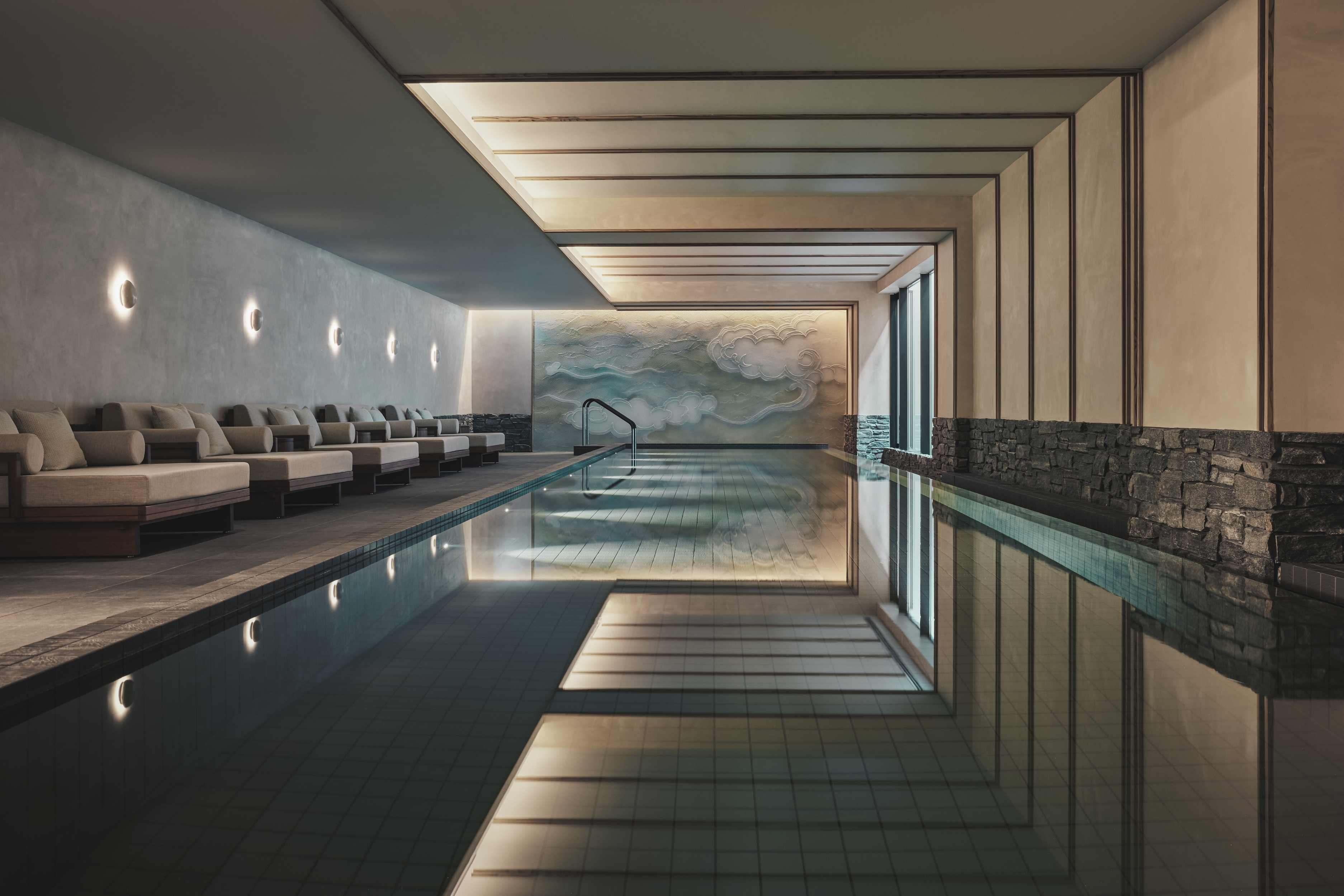
Six Senses Kyoto Swimming Pool
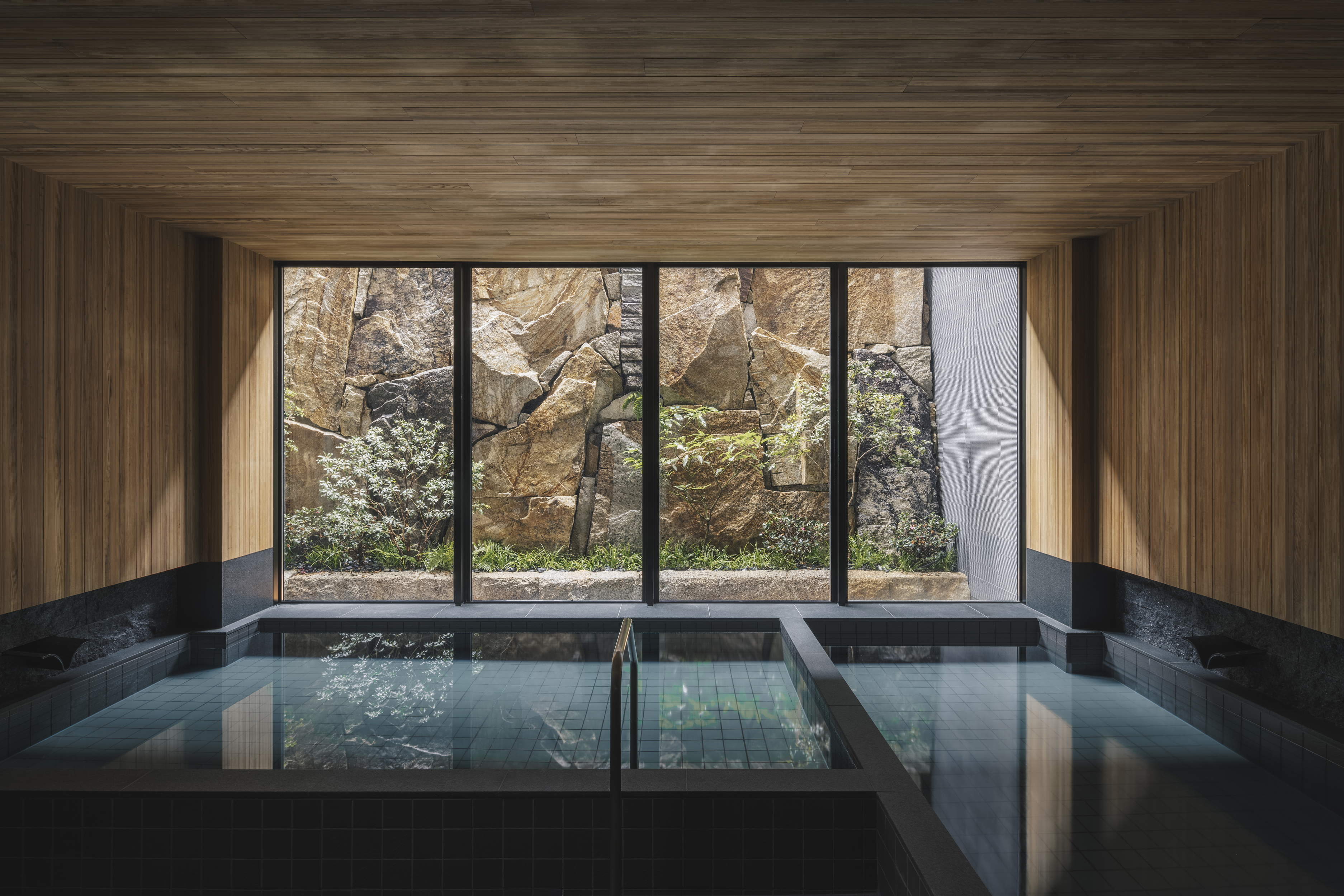
Six Senses Kyoto Bathhouse

Six Senses Kyoto Bathhouse Sauna
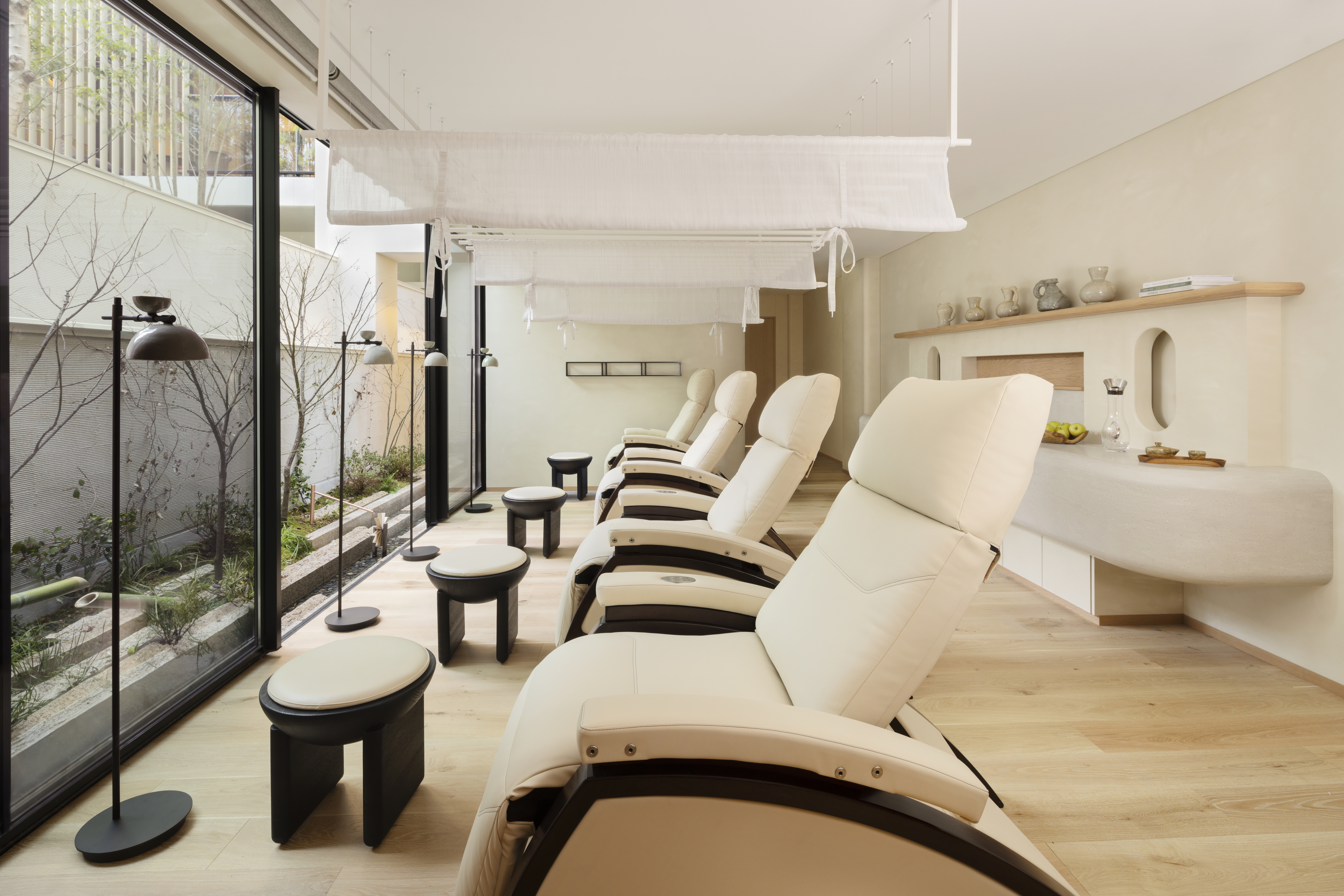
Six Senses Kyoto Spa Recovery Lounge
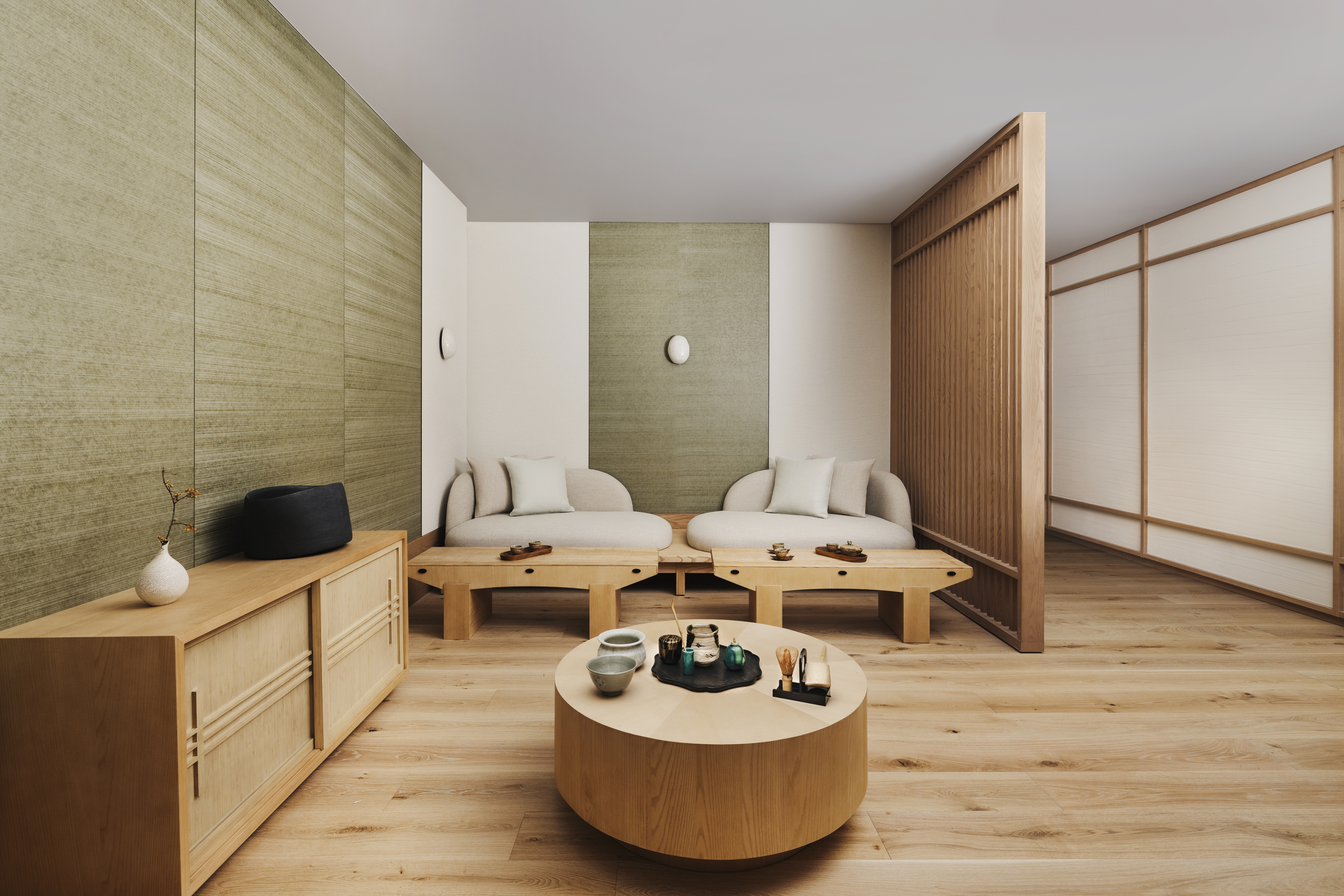
Six Senses Kyoto Spa Tea Lounge
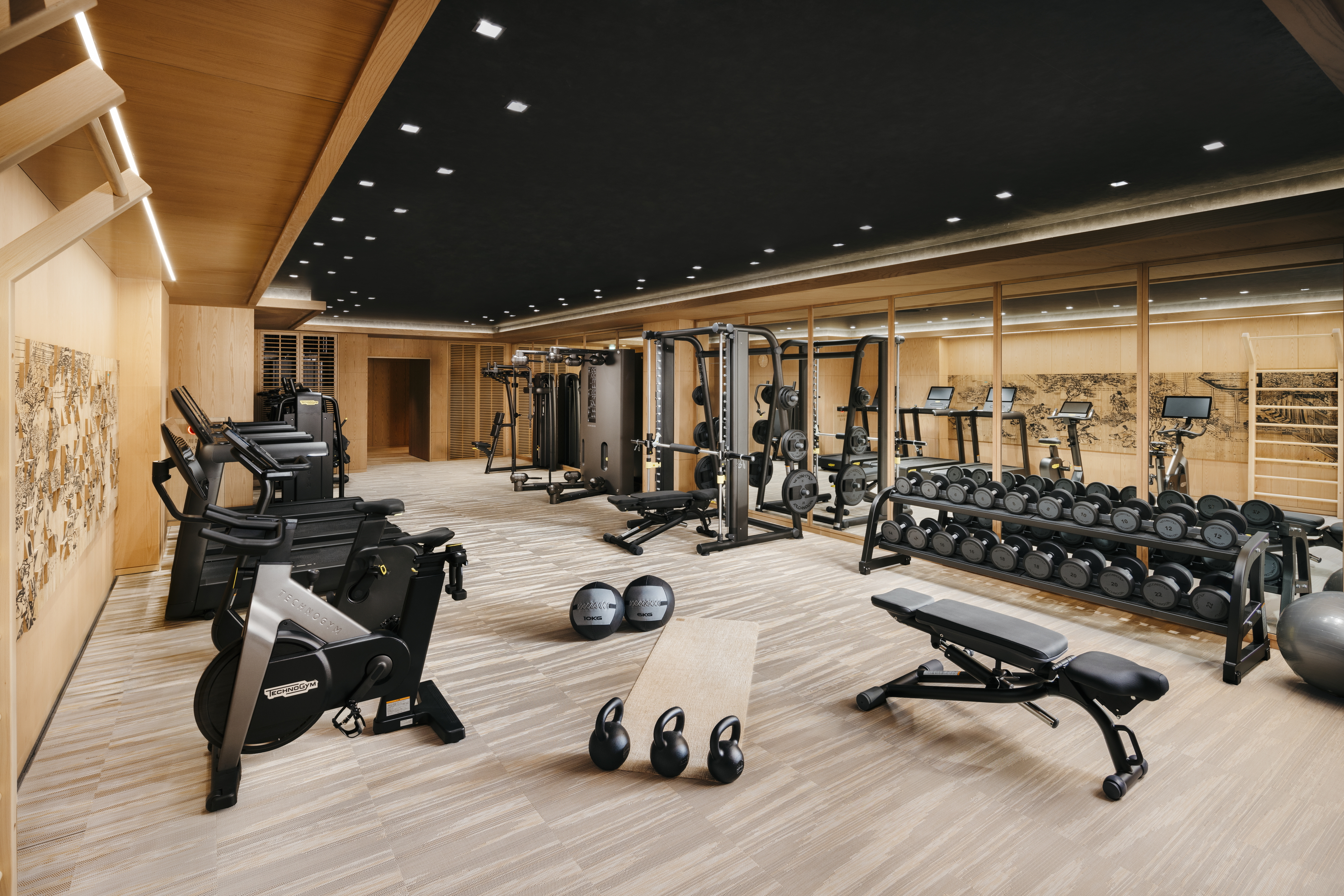
Six Senses Kyoto Fitness
The lower levels, wrapping around the sunken courtyard garden, are home to hubs such as an Earth Lab – as in all Six Senses – an intimate space with a sculptural wood ceiling, where workshops unfold, making beeswax wraps and mosquito repellent. Wellness also steals the show. The expansive spa is home to a serene network of spaces: a swimming pool with a designated area for Watsu therapy, an Alchemy Bar, a Biohack Recovery Lounge and a Tea Lounge.
Water sounds, ikebana flower arrangements and Zen-inspired rocks complement expanses of natural materials and soft biophilic curves, while each of the treatment rooms is inspired by the five senses and complete with wind chimes, rock gardens, incense and moss walls.
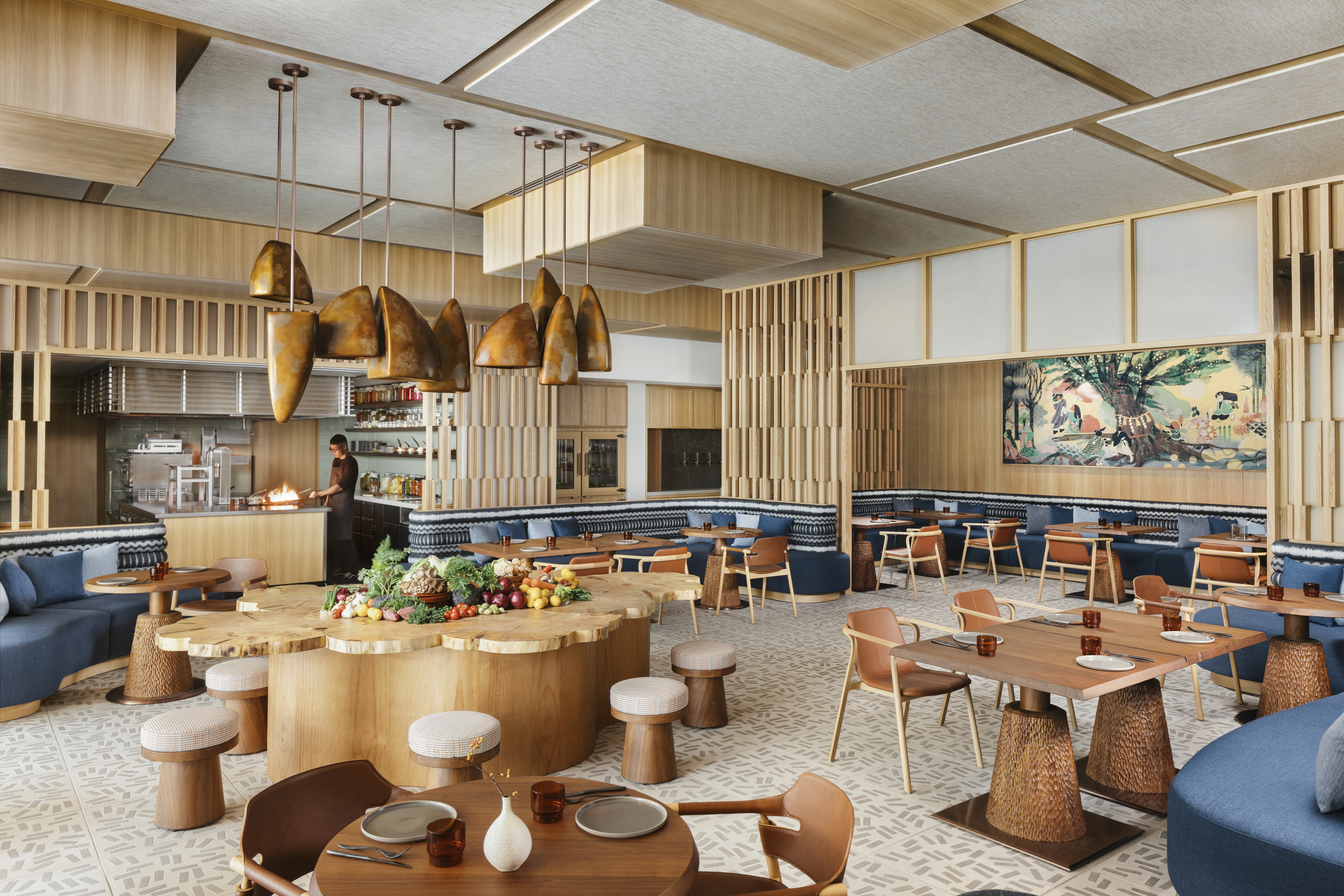
Six Senses Kyoto Sekki Open Kitchen
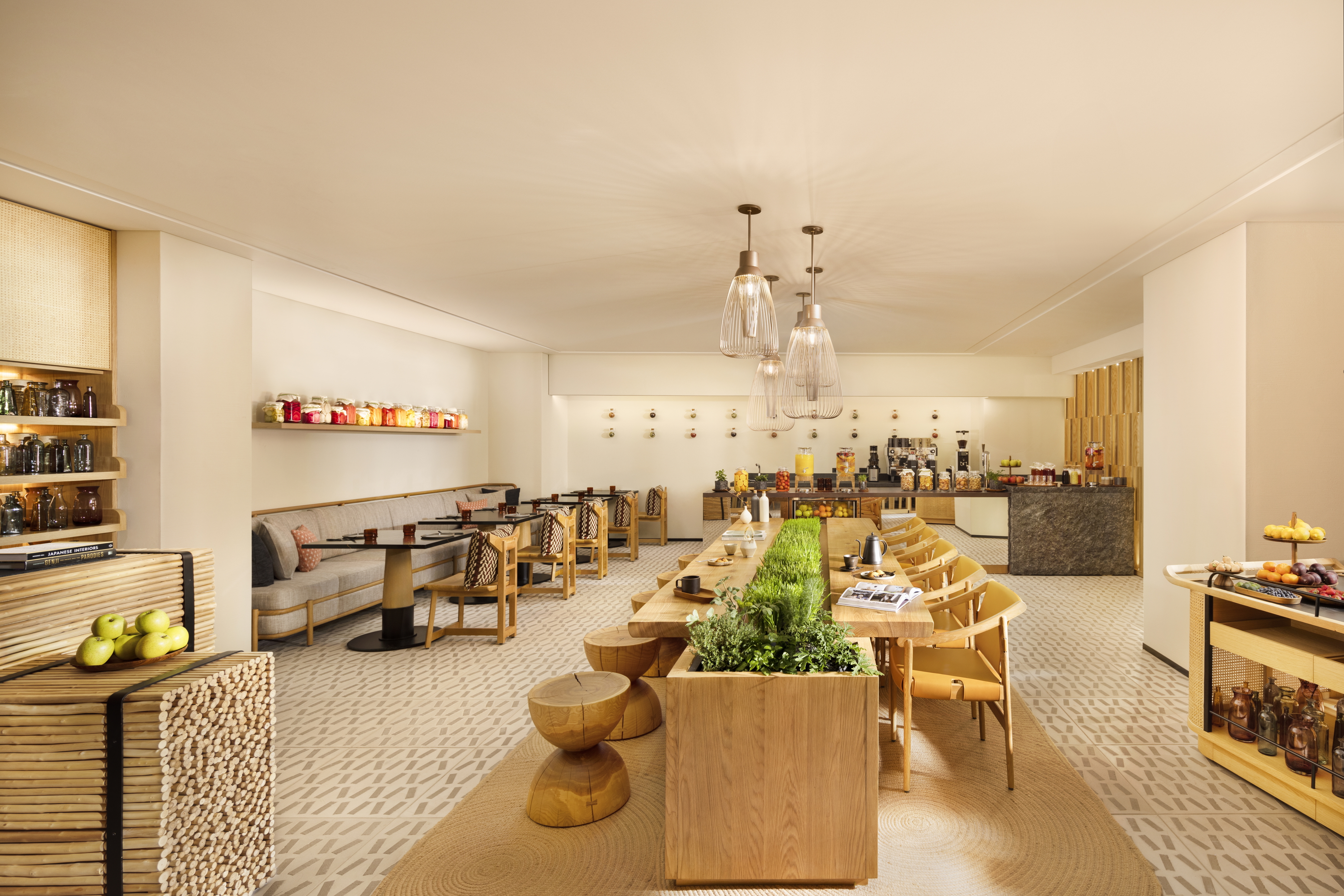
Six Senses Kyoto Café Sekki
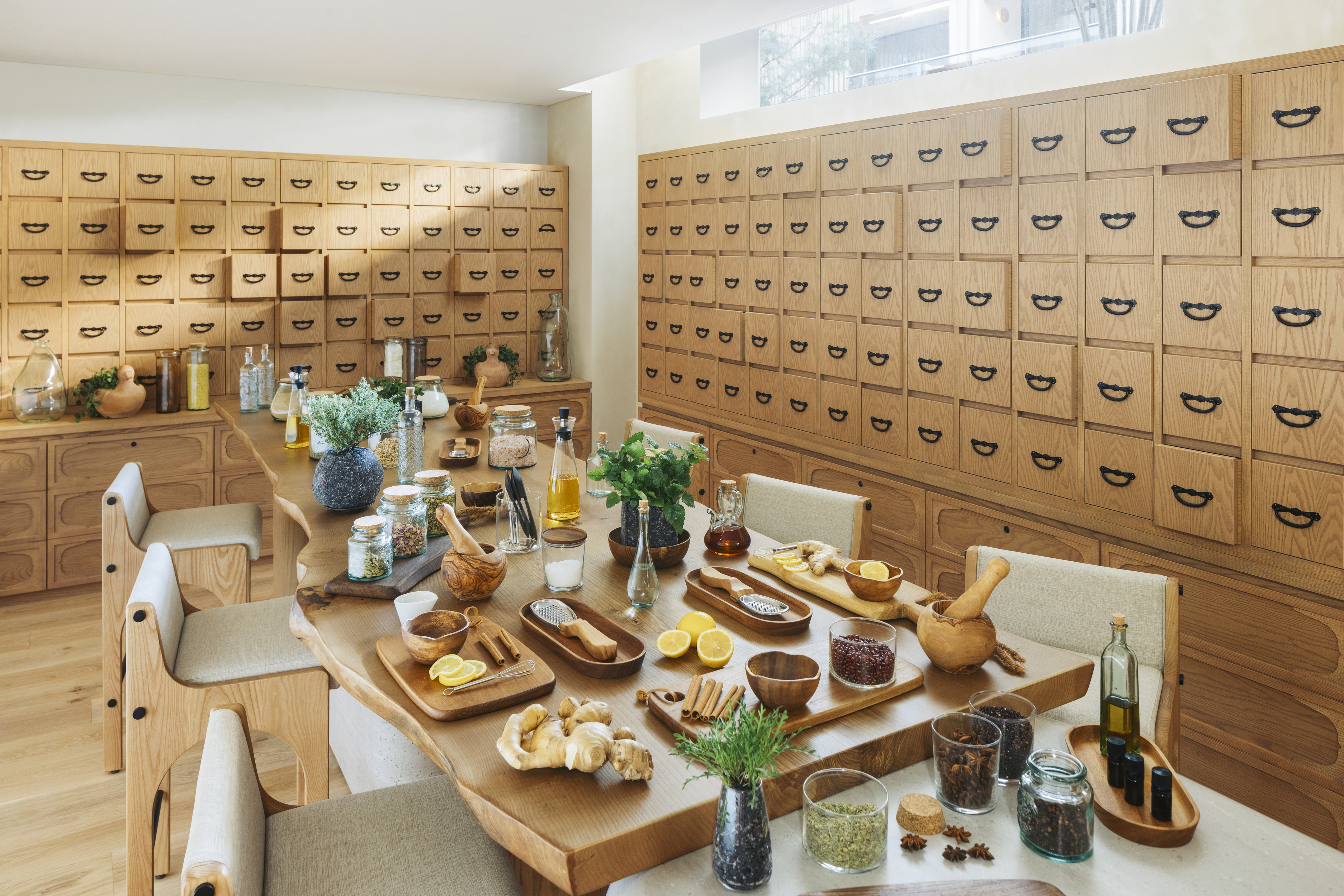
Six Senses Kyoto Alchemy Bar
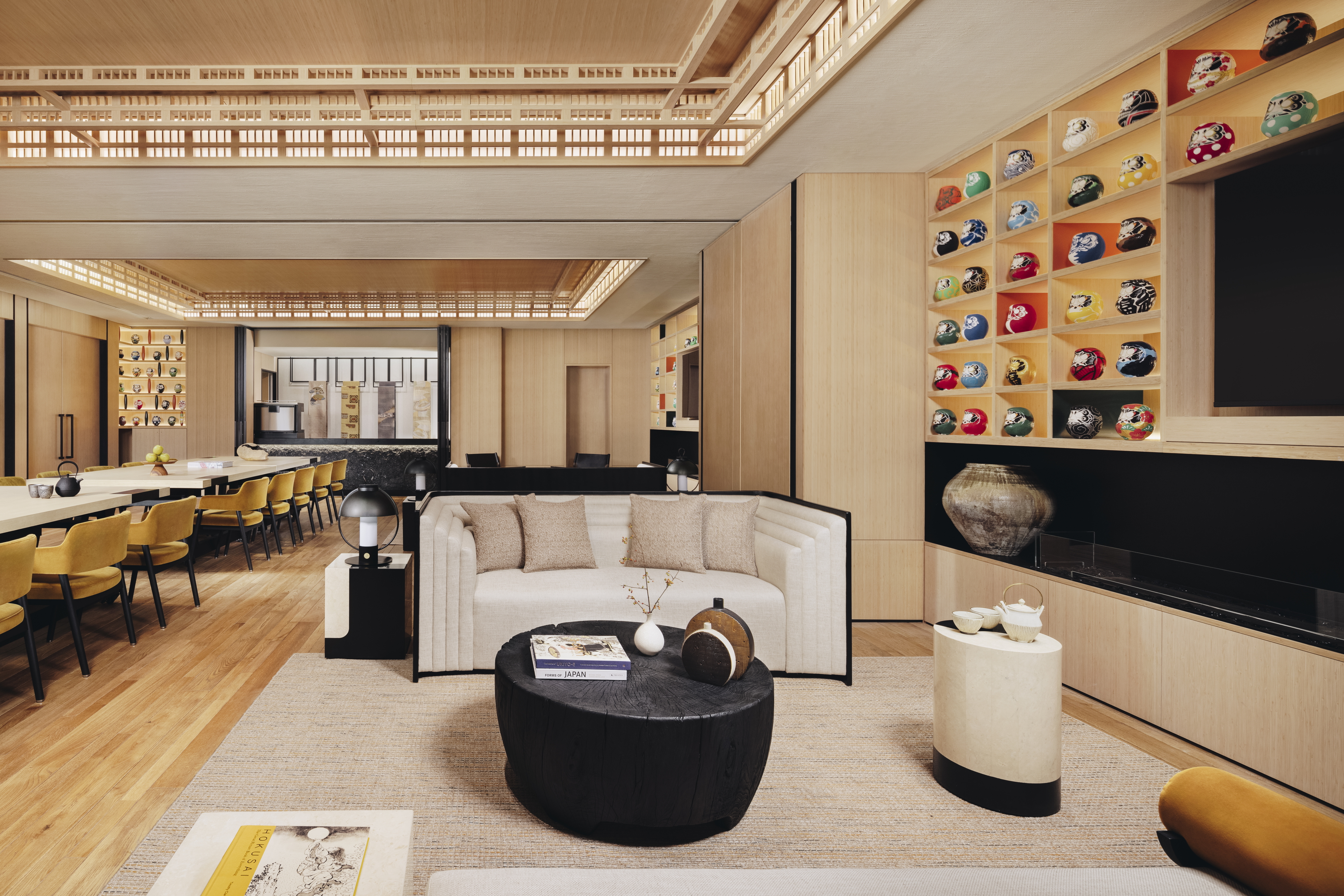
Six Senses Kyoto Banquet Kyomurasaki
Food is served in the all-day dining Sekki and Café Sekki: warm open spaces with organic materials and biophilic abstractions, where dishes are crafted from mindfully sourced seasonal ingredients, such as Kyoto vegetables grown by seventh-generation Yamada Farm. After dark, Nine Tails is an intimate cocktail bar with the atmosphere of a modern apothecary and design details, including a forest-green tiled counter and yakisugi burnt cedar flooring.
And threading all these elements together is the spirit of playfulness, known as asobi gokoro, according to Nakata: ‘It’s a playfulness that references elements of Japanese culture, reflected in various fittings and furnishings. We hope that this perspective allows our guests to take away very special memories of an extraordinary hotel experience long after their stay.’

Six Senses Kyoto Playground
Six Senses Kyoto is located at 431 Myohoin Maekawacho, Kyoto
Danielle Demetriou is a British writer and editor who moved from London to Japan in 2007. She writes about design, architecture and culture (for newspapers, magazines and books) and lives in an old machiya townhouse in Kyoto.
Instagram - @danielleinjapan
-
 Warp Records announces its first event in over a decade at the Barbican
Warp Records announces its first event in over a decade at the Barbican‘A Warp Happening,' landing 14 June, is guaranteed to be an epic day out
By Tianna Williams
-
 Cure your ‘beauty burnout’ with Kindred Black’s artisanal glassware
Cure your ‘beauty burnout’ with Kindred Black’s artisanal glasswareDoes a cure for ‘beauty burnout’ lie in bespoke design? The founders of Kindred Black think so. Here, they talk Wallpaper* through the brand’s latest made-to-order venture
By India Birgitta Jarvis
-
 The UK AIDS Memorial Quilt will be shown at Tate Modern
The UK AIDS Memorial Quilt will be shown at Tate ModernThe 42-panel quilt, which commemorates those affected by HIV and AIDS, will be displayed in Tate Modern’s Turbine Hall in June 2025
By Anna Solomon
-
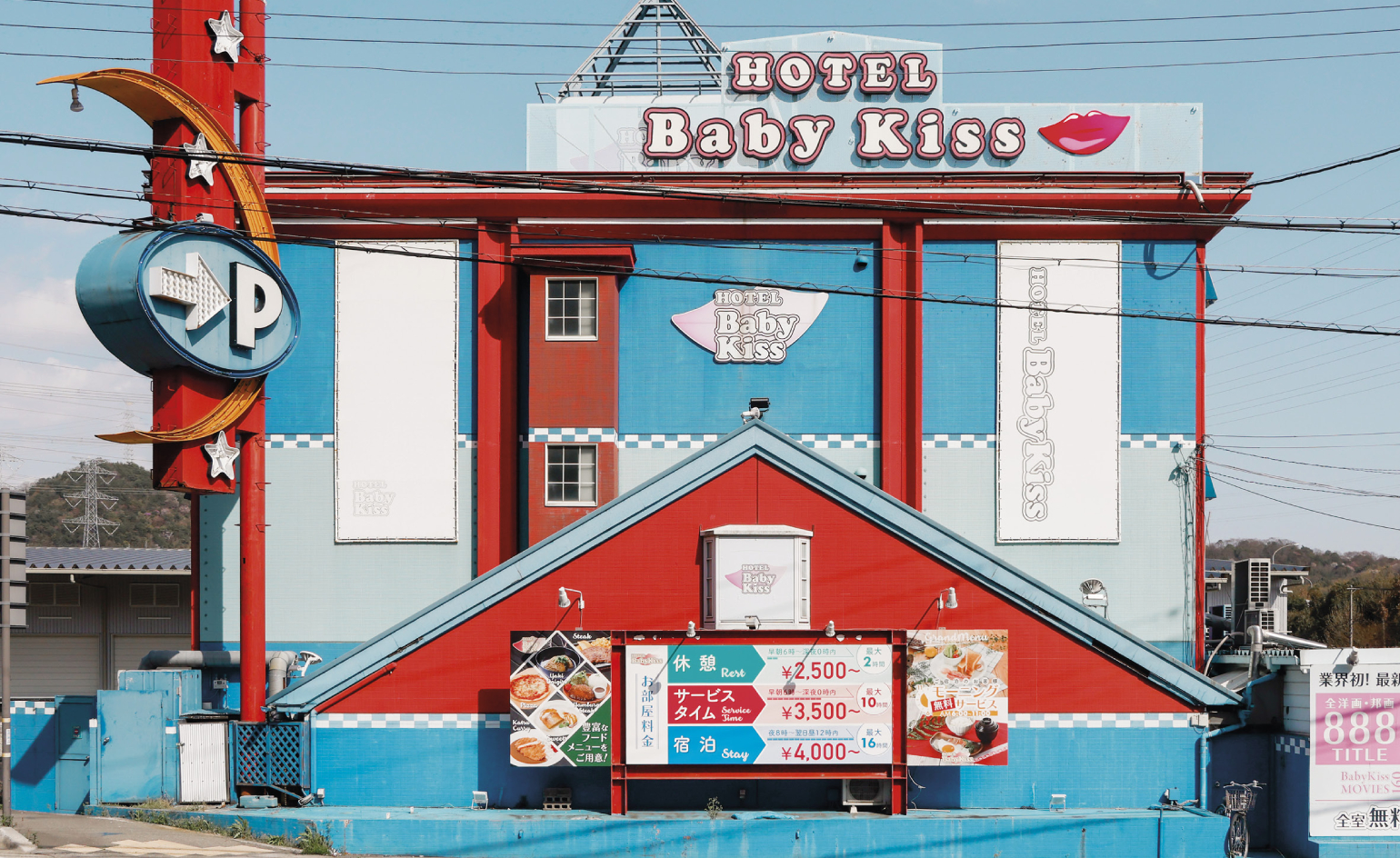 A new book captures the kitschy allure of Japanese ‘love hotels’
A new book captures the kitschy allure of Japanese ‘love hotels’For his latest project, French photographer François Prost documents the whimsical façades that characterise these erotic roadside venues.
By Sofia de la Cruz
-
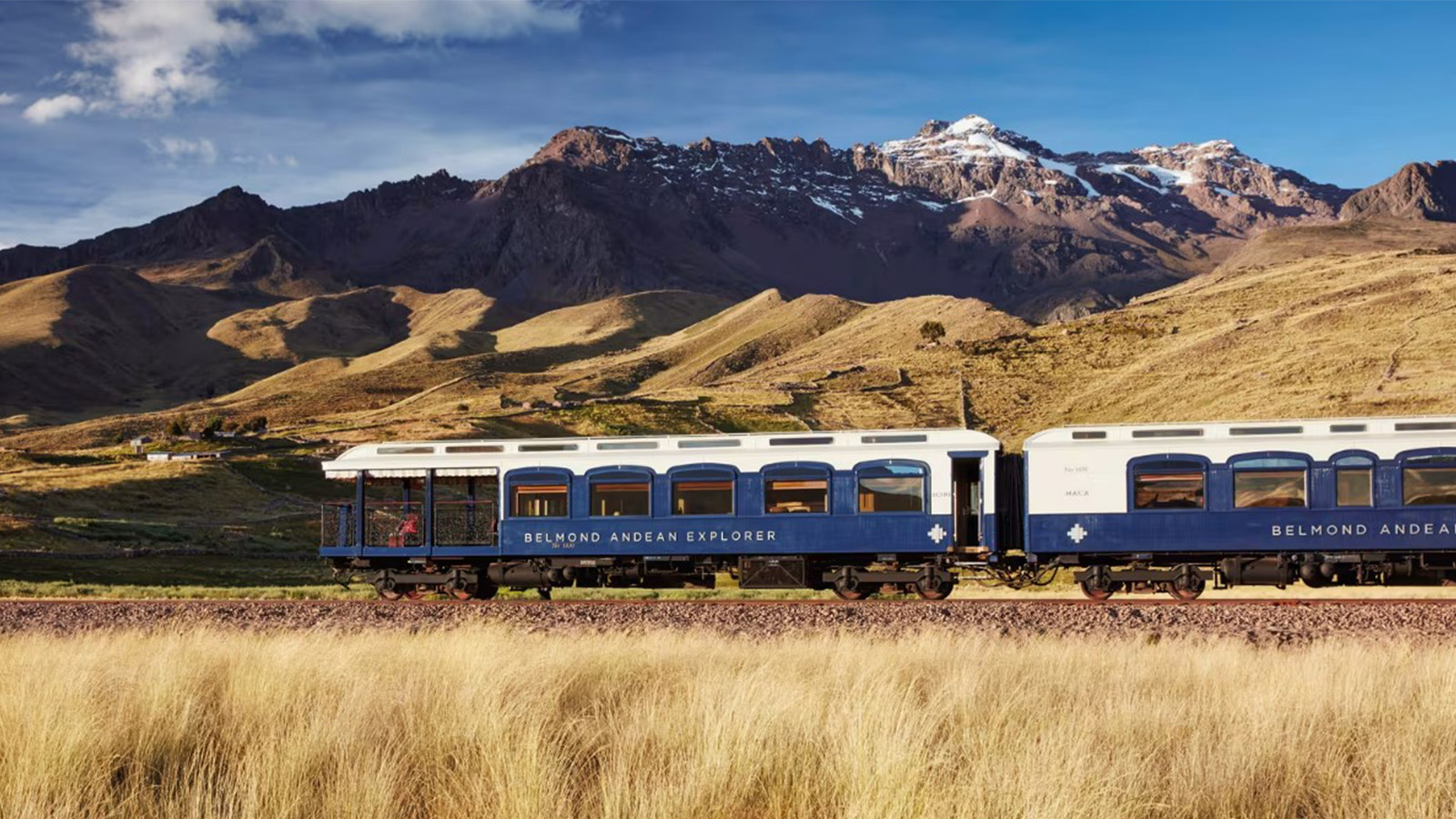 All aboard the world’s most luxurious train journeys
All aboard the world’s most luxurious train journeysStay on track with our pick of the most luxurious train journeys around the world, whether in 1920s-style opulence or contemporary chic
By Tianna Williams
-
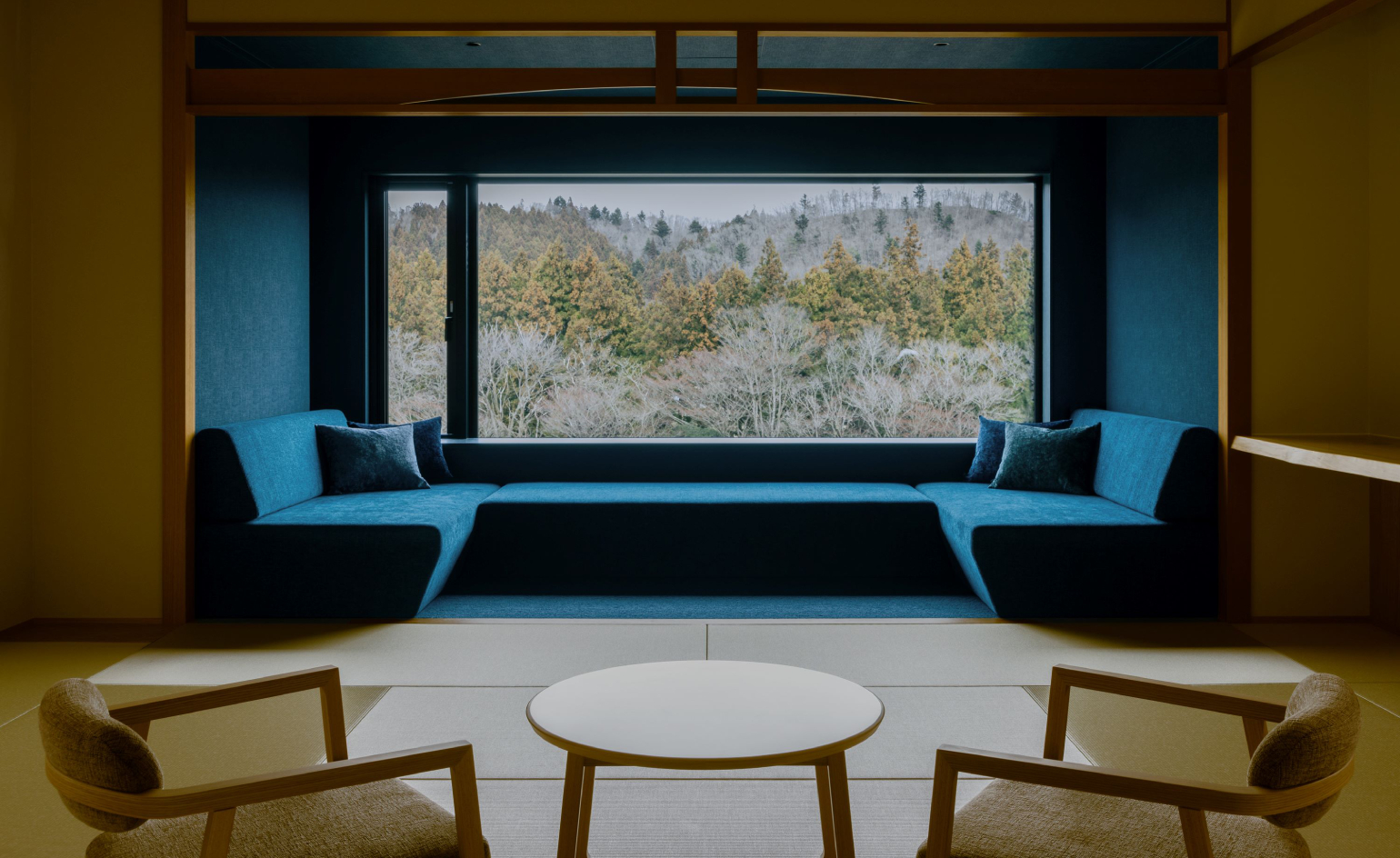 Wallpaper* checks in at Hoshino Resorts KAI Akiu: a soothing onsen hotel
Wallpaper* checks in at Hoshino Resorts KAI Akiu: a soothing onsen hotelIn Japan’s bucolic northeast, Hoshino Resorts KAI Akiu breathes new life into a sleepy hot spring village without betraying its ancient roots
By Eric Millman
-
 Shake off the winter chill at these design-led onsen hotels in Japan
Shake off the winter chill at these design-led onsen hotels in JapanWhether you’re heading to the mountains of Hokkaido or the alleys of Kyoto’s Gion district, these immaculately designed onsen hotels will keep the shivers at bay
By Jen Paolini
-
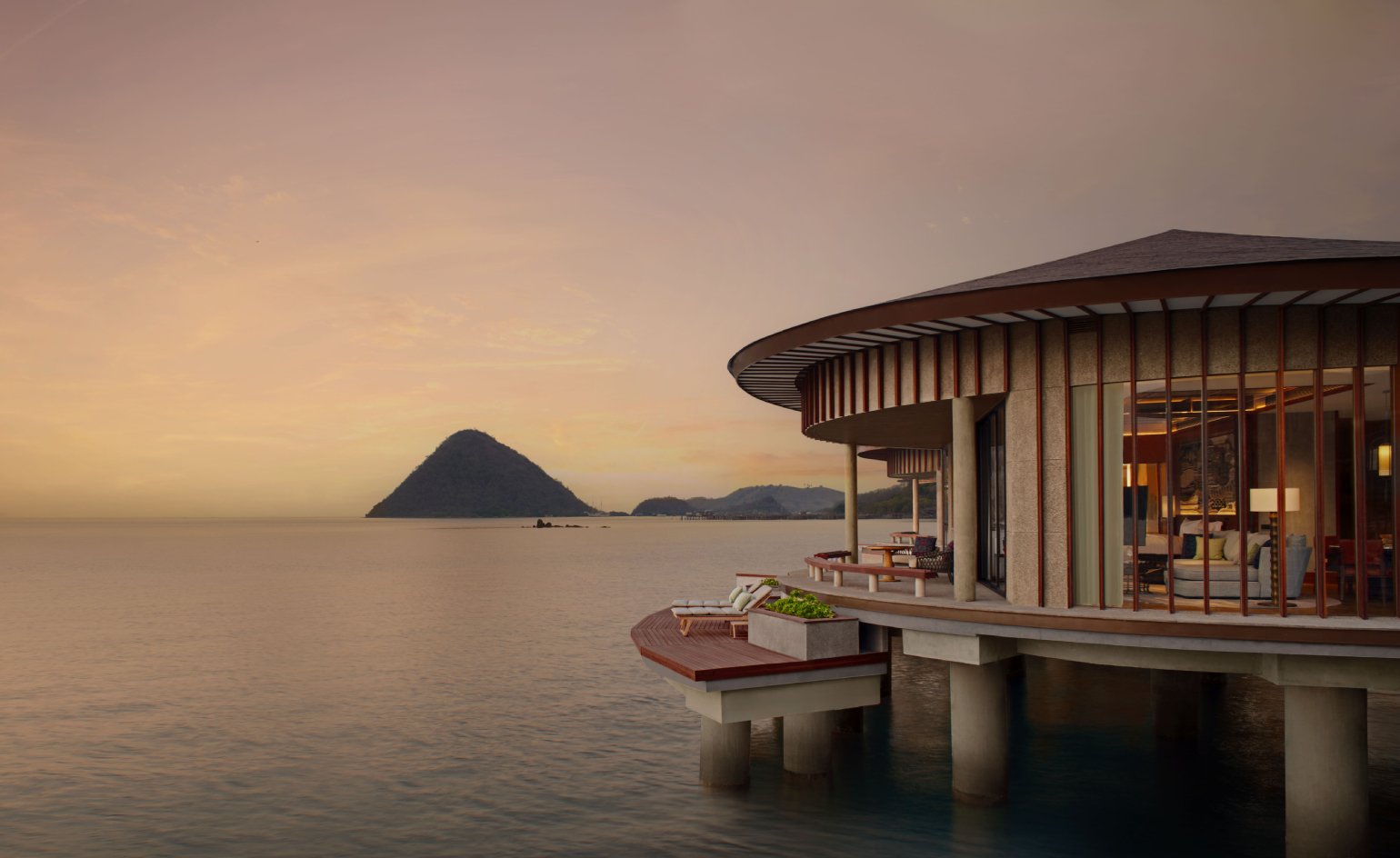 The new hotels you’ll want to stay at in 2025
The new hotels you’ll want to stay at in 2025Where to stay in 2025? Let six of the most-read-about hotel openings of the past 12 months inspire your escape – from a tiny Tokyo bolthole to a Tanzanian safari retreat
By Sofia de la Cruz
-
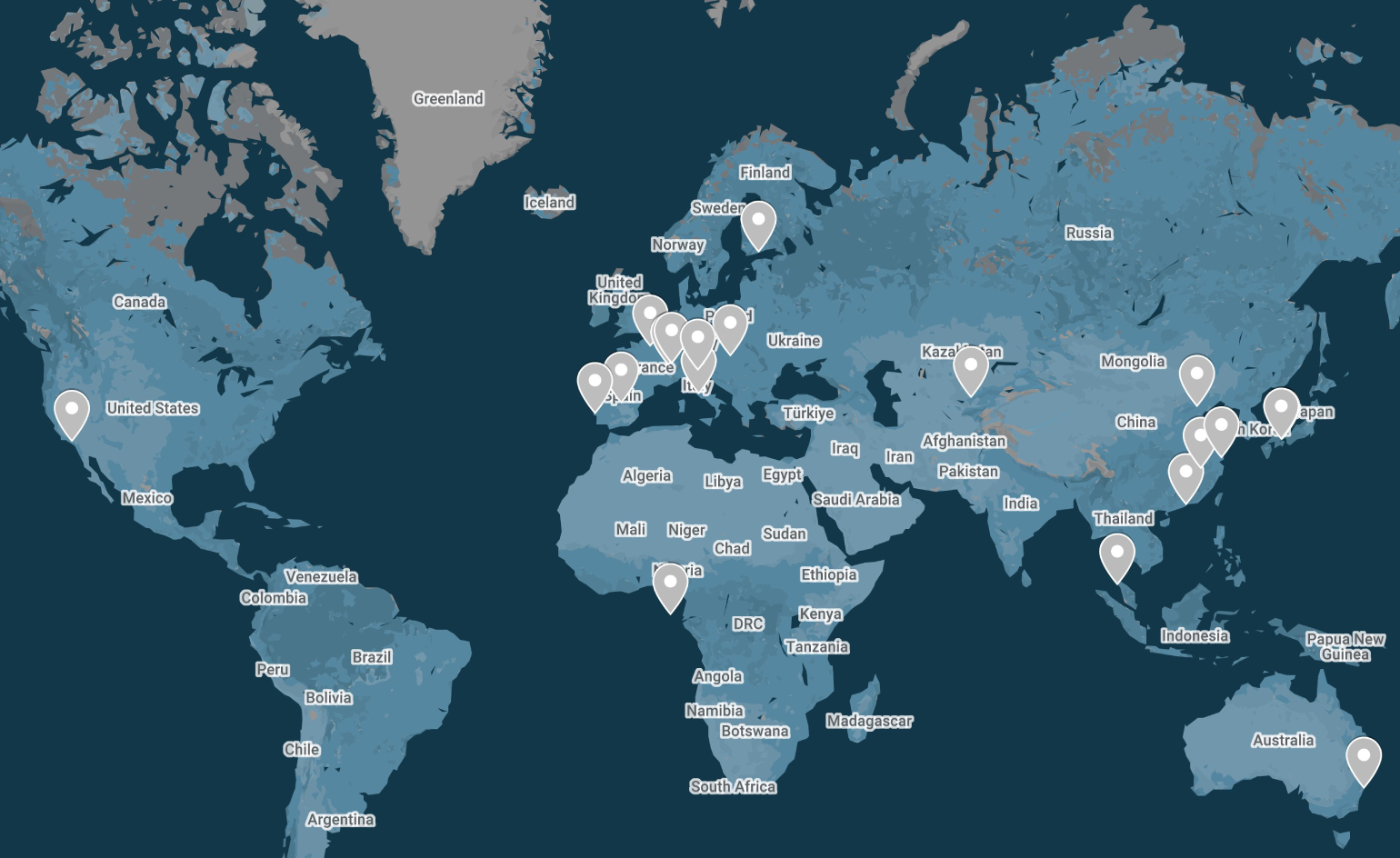 2025 getaways: where Wallpaper* editors will be travelling to this year
2025 getaways: where Wallpaper* editors will be travelling to this yearFrom the Japanese art islands of Naoshima and Teshima to the Malaysian tropical paradise of Langkawi, here’s where Wallpaper* editors plan to travel to in 2025
By Sofia de la Cruz
-
 The most whimsical hotel Christmas trees around the world
The most whimsical hotel Christmas trees around the worldWe round up the best hotel Christmas tree collaborations of the year, from an abstract take in Madrid to a heritage-rooted installation in Amsterdam
By Tianna Williams
-
 Six brilliant bars for your 2025 celebrations, hot off the Wallpaper* travel desk
Six brilliant bars for your 2025 celebrations, hot off the Wallpaper* travel deskWallpaper’s most-read bar reviews of the year can't be wrong: here’s inspiration for your festive and new year plans, from a swanky Las Vegas lounge to a minimalist London drinking den
By Sofia de la Cruz